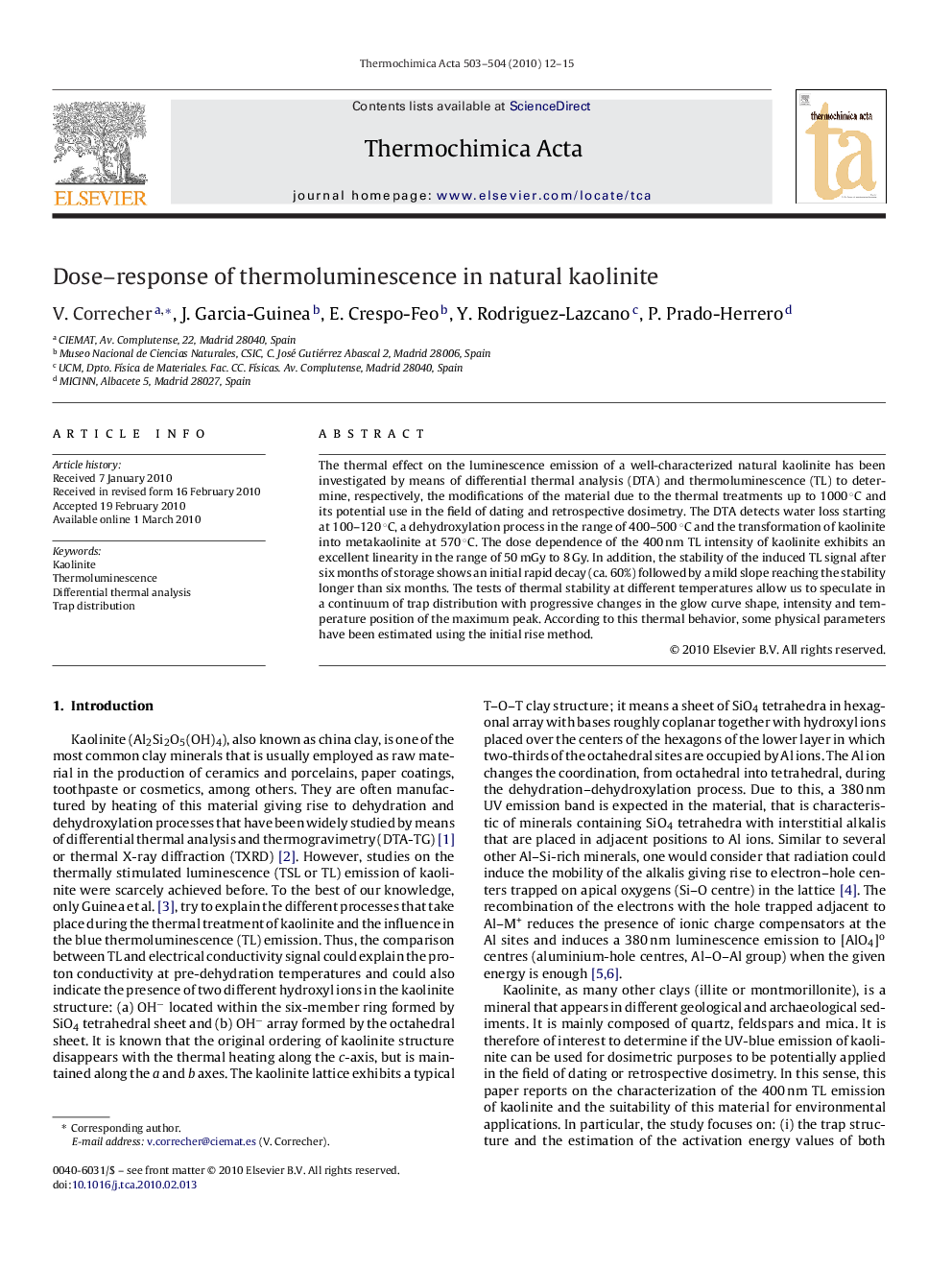| Article ID | Journal | Published Year | Pages | File Type |
|---|---|---|---|---|
| 674857 | Thermochimica Acta | 2010 | 4 Pages |
The thermal effect on the luminescence emission of a well-characterized natural kaolinite has been investigated by means of differential thermal analysis (DTA) and thermoluminescence (TL) to determine, respectively, the modifications of the material due to the thermal treatments up to 1000 °C and its potential use in the field of dating and retrospective dosimetry. The DTA detects water loss starting at 100–120 °C, a dehydroxylation process in the range of 400–500 °C and the transformation of kaolinite into metakaolinite at 570 °C. The dose dependence of the 400 nm TL intensity of kaolinite exhibits an excellent linearity in the range of 50 mGy to 8 Gy. In addition, the stability of the induced TL signal after six months of storage shows an initial rapid decay (ca. 60%) followed by a mild slope reaching the stability longer than six months. The tests of thermal stability at different temperatures allow us to speculate in a continuum of trap distribution with progressive changes in the glow curve shape, intensity and temperature position of the maximum peak. According to this thermal behavior, some physical parameters have been estimated using the initial rise method.
